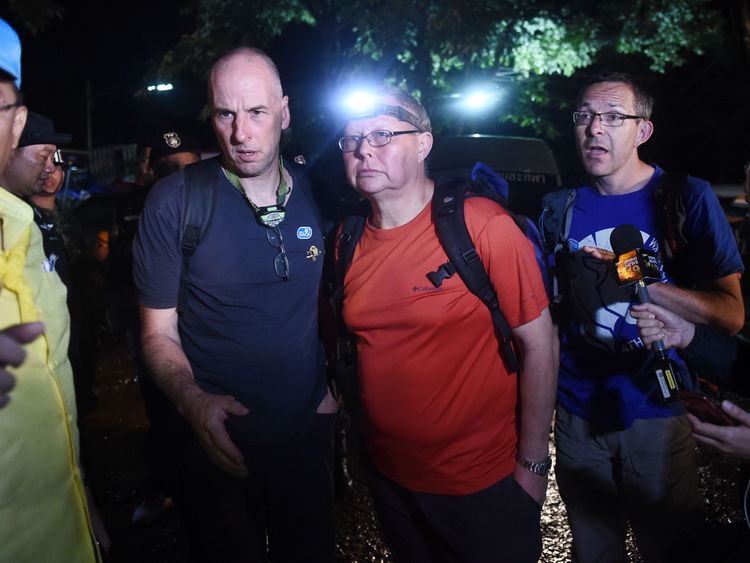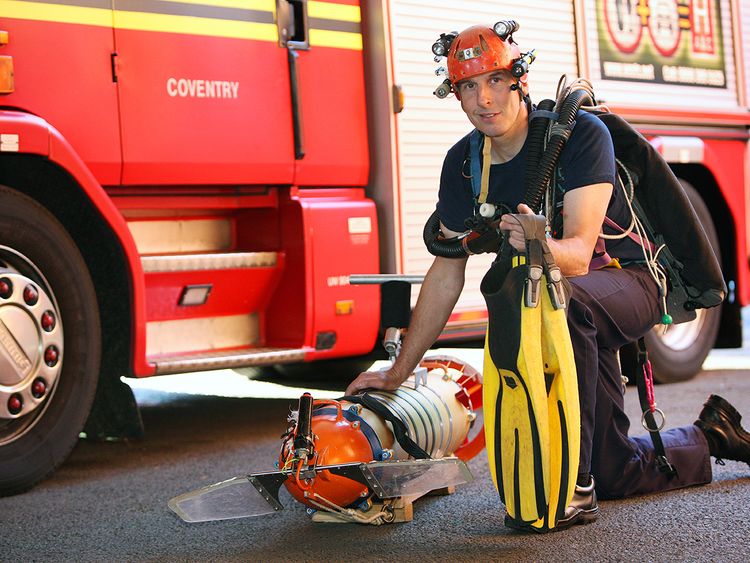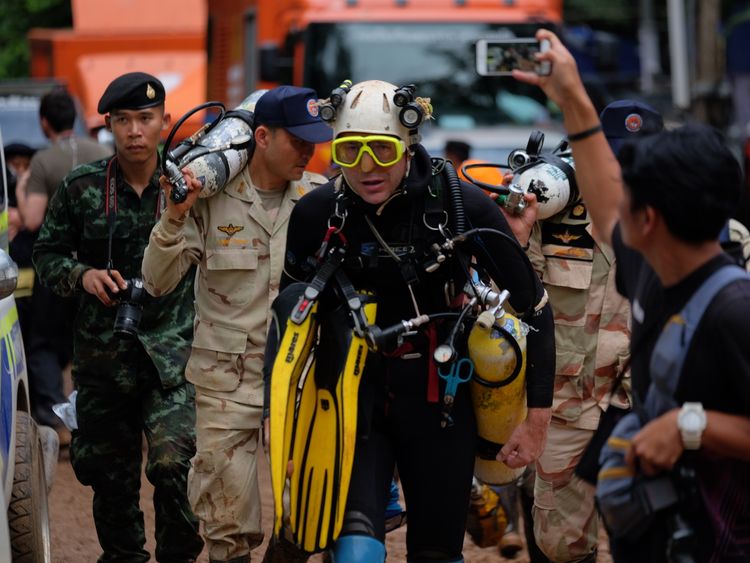Rick Stanton and John Volanthen were the first rescuers to reach the group of young footballers and their coach trapped in a cave in northern Thailand.
Mr Stanton and Mr Volanthen, along with a third Briton, Robert Harper, joined the international rescue effort after Thai authorities contacted the British Cave Rescue Council (BCRC) seeking expert help.
After 10 days without a sign, and with monsoon rains pouring down, the divers finally found the frightened boys and their coach on Monday.
In footage of the moment the divers arrived in the chamber, a rescuer with an English accent is heard trying to reassure the group that help is coming.
However, the man warns that they are not going to be able to get the boys our immediately, saying: “Not today. There’s two of us, you have to dive.”
BCRC vice chairman Bill Whitehouse explained how Mr Stanton and Mr Volanthen led the search party.
“The British divers Rick and John were at the spearhead of that,” Mr Whitehouse said.
“They were pushing ahead with the other divers following on behind, creating dumps of air bottles.
“They managed to dive the last section and get through into the chamber where the missing party were on a ledge above the water.”
Here’s some more info on the hero divers.
:: Rick Stanton
Mr Stanton is regarded as one of the world’s leading cave rescue experts and was made an MBE at the end of 2012.
A former fireman from Coventry, Mr Stanton is in his 50s and is believed to have been part of a rescue mission to evacuate six Britons who were trapped in a cave in Mexico in 2004.
With more than 30 years of experience cave diving, his former colleague Alex Daw at West Midlands Fire Service says it “is not surprising” Mr Stanton was involved in the rescue and that there is “no one better to help them out… [they] couldn’t be in safer hands”.
“We are all really proud,” he added.
Divernet, a publication for scuba divers, described Mr Stanton as “arguably the main face of British cave diving”.
In a 2007 interview, he told Divenet that he learnt to dive when he joined a club at university but taught himself how to cave dive.
He highlighted some of the challenges of cave diving.
“Most of the ocean is largely unexplored, but it’s still all mapped out. You know how deep it is and what’s likely to be there if you dive it… but with caving you don’t know whether to go up, down, left or right. You could go one way and find the best chamber in the world. There’s no technology that will tell you that – you just have to be there,” he said.
Ahead of a dive it is common to feel tense, Mr Stanton admits. His own coping mechanism is to visualise the dive and to draw upon patterns of previous dives, he said.
“You can’t afford to get tense, as there is still a lot occupying your mind. Nor is there time to go into half an hour of trance,” he said.
“I see myself doing the dive, not like a film or a snapshot but in critical segments, what I’m doing at set points, how I’m doing it, and what happens if something goes wrong.”
:: John Volanthen
Mr Volanthen is an IT consultant in his 40s.
Based in Bristol, he set a world record for the longest dive from the surface of water in a team with Mr Stanton in 2011.
He said in an interview with The Sunday Times magazine in 2013 that caving requires a cool head and that “the flight response now isn’t always appropriate. Panic and adrenaline are great in certain situations but not in cave diving.
“The last thing you want is any adrenaline whatsoever.”
The pair contributed to The Cave Diving Group Manual and Mr Volanthen is a keen marathon runner.
Think your friends would be interested? Share this story!







